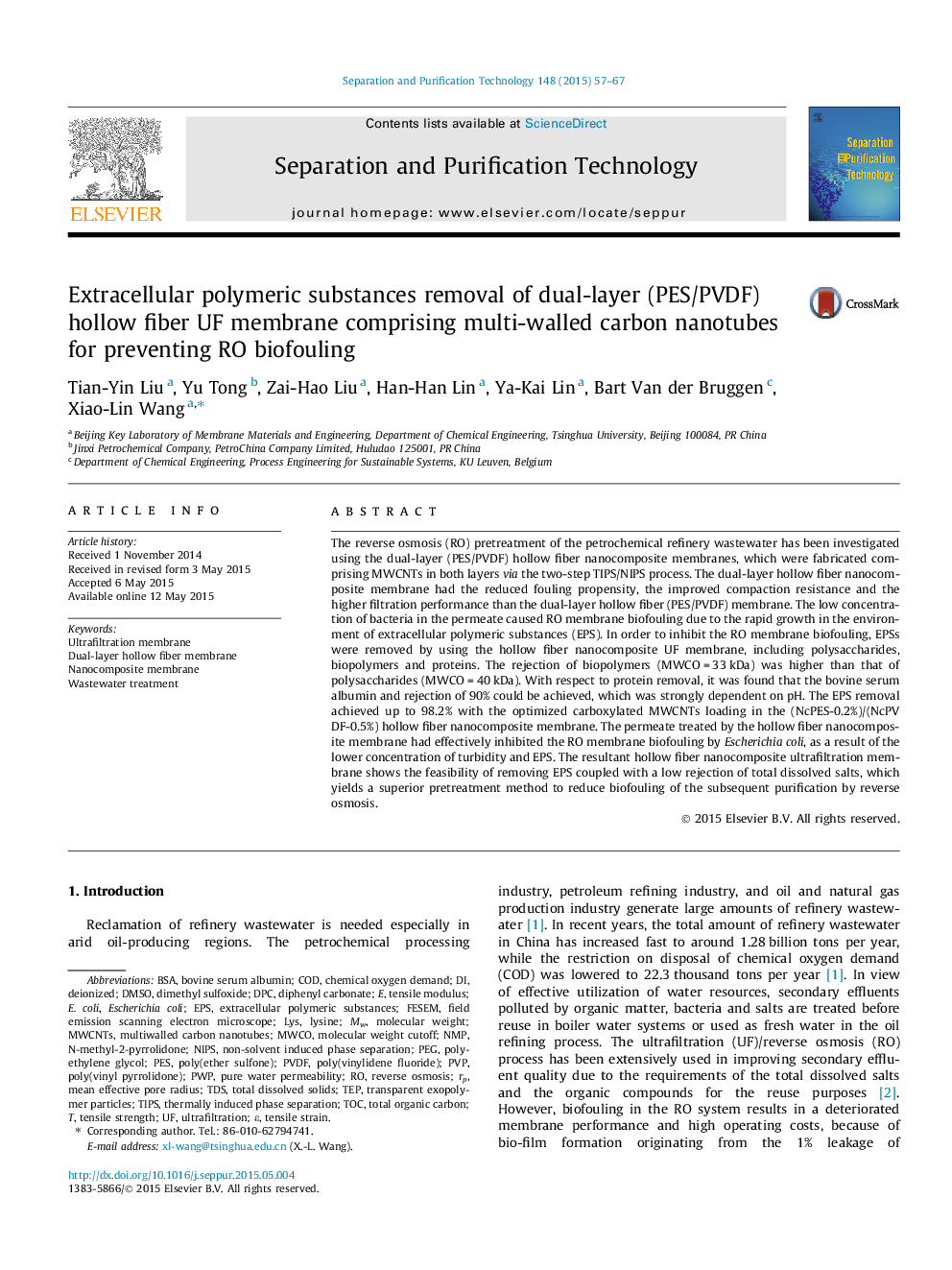| Article ID | Journal | Published Year | Pages | File Type |
|---|---|---|---|---|
| 640622 | Separation and Purification Technology | 2015 | 11 Pages |
Abstract
The reverse osmosis (RO) pretreatment of the petrochemical refinery wastewater has been investigated using the dual-layer (PES/PVDF) hollow fiber nanocomposite membranes, which were fabricated comprising MWCNTs in both layers via the two-step TIPS/NIPS process. The dual-layer hollow fiber nanocomposite membrane had the reduced fouling propensity, the improved compaction resistance and the higher filtration performance than the dual-layer hollow fiber (PES/PVDF) membrane. The low concentration of bacteria in the permeate caused RO membrane biofouling due to the rapid growth in the environment of extracellular polymeric substances (EPS). In order to inhibit the RO membrane biofouling, EPSs were removed by using the hollow fiber nanocomposite UF membrane, including polysaccharides, biopolymers and proteins. The rejection of biopolymers (MWCOÂ =Â 33Â kDa) was higher than that of polysaccharides (MWCOÂ =Â 40Â kDa). With respect to protein removal, it was found that the bovine serum albumin and rejection of 90% could be achieved, which was strongly dependent on pH. The EPS removal achieved up to 98.2% with the optimized carboxylated MWCNTs loading in the (NcPES-0.2%)/(NcPVDF-0.5%) hollow fiber nanocomposite membrane. The permeate treated by the hollow fiber nanocomposite membrane had effectively inhibited the RO membrane biofouling by Escherichia coli, as a result of the lower concentration of turbidity and EPS. The resultant hollow fiber nanocomposite ultrafiltration membrane shows the feasibility of removing EPS coupled with a low rejection of total dissolved salts, which yields a superior pretreatment method to reduce biofouling of the subsequent purification by reverse osmosis.
Keywords
NMPMWCONIPSPESPWPEPSDPCPVDFTEPTDSTOCFESEMPVPN-methyl-2-pyrrolidoneE. colideionizedMWCNTsBSADMSObovine serum albuminTensile strengthReverse OsmosisEscherichia coliUltrafiltrationWastewater treatmentchemical oxygen demandThermally induced phase separationNon-solvent induced phase separationDimethyl sulfoxideTransparent exopolymer particlesUltrafiltration membraneDual-layer hollow fiber membraneNanocomposite membraneMolecular weight cutoffLysineLYSTotal dissolved solidstensile modulusExtracellular polymeric substancesField Emission Scanning Electron MicroscopeMultiwalled carbon nanotubesPure water permeabilityTIPSMolecular weightPoly(vinyl pyrrolidone)Poly(ether sulfone)polyethylene glycolPoly(vinylidene fluoride)PEGCodDiphenyl carbonateTensile strainTotal organic carbon
Related Topics
Physical Sciences and Engineering
Chemical Engineering
Filtration and Separation
Authors
Tian-Yin Liu, Yu Tong, Zai-Hao Liu, Han-Han Lin, Ya-Kai Lin, Bart Van der Bruggen, Xiao-Lin Wang,
